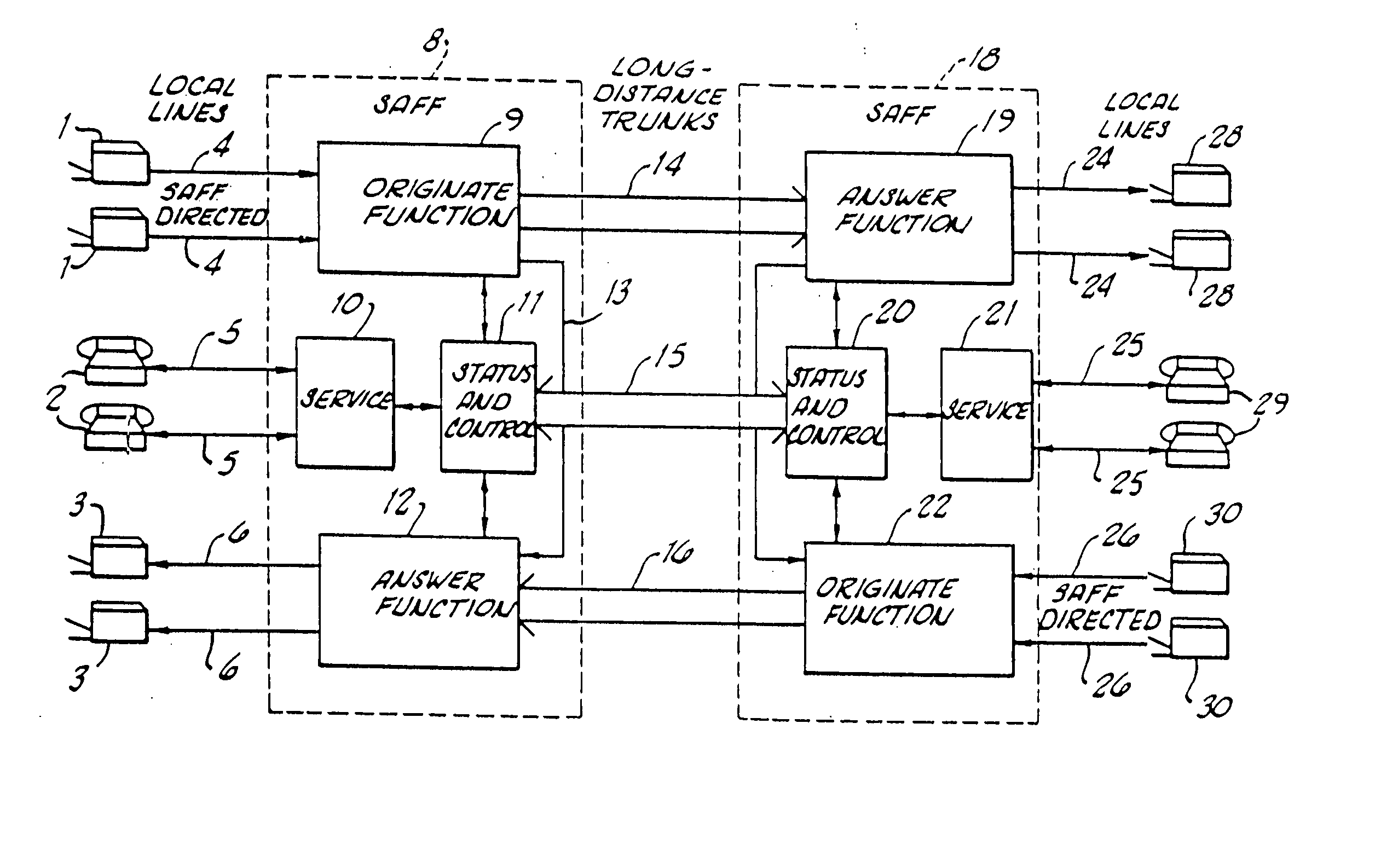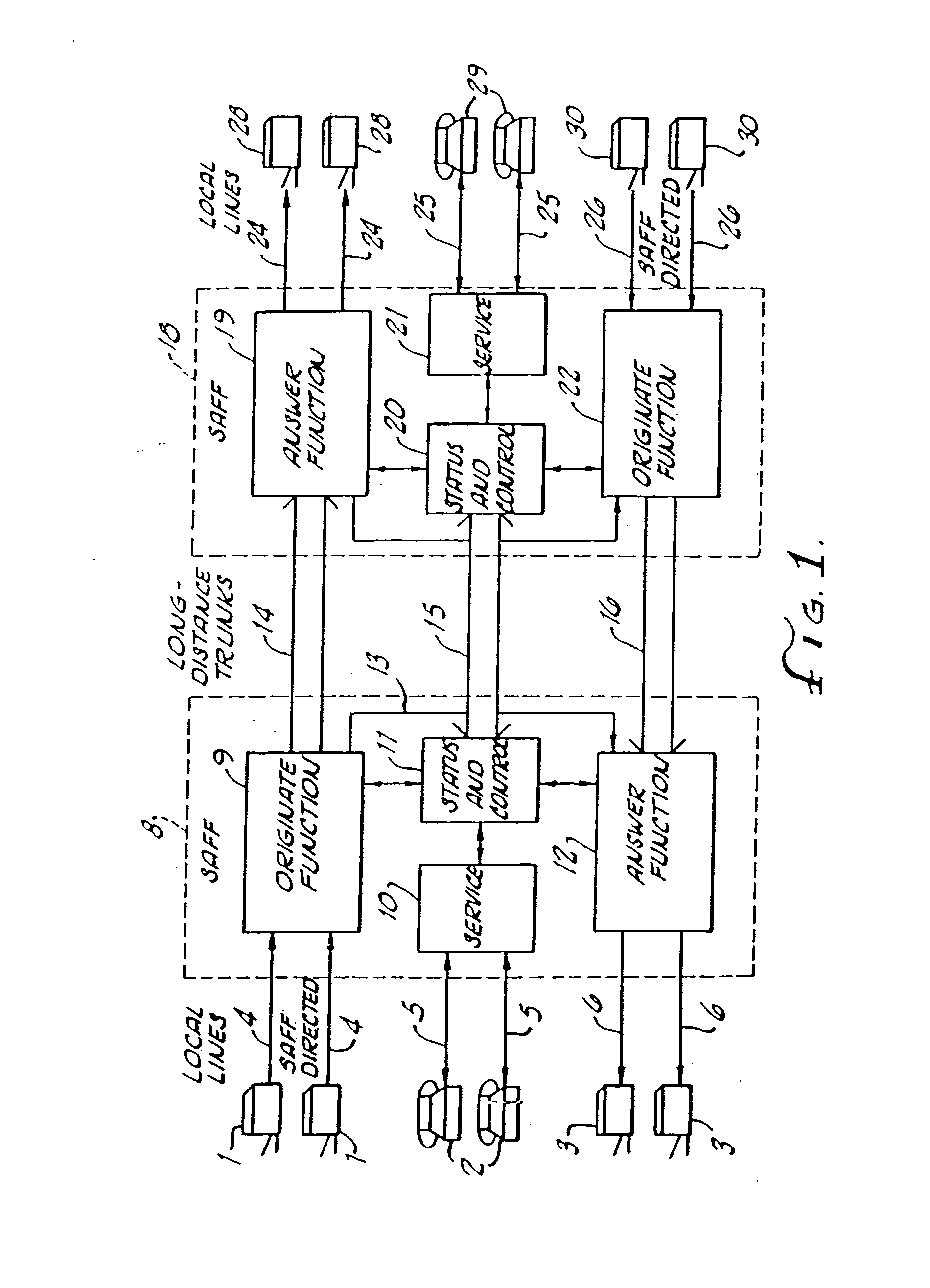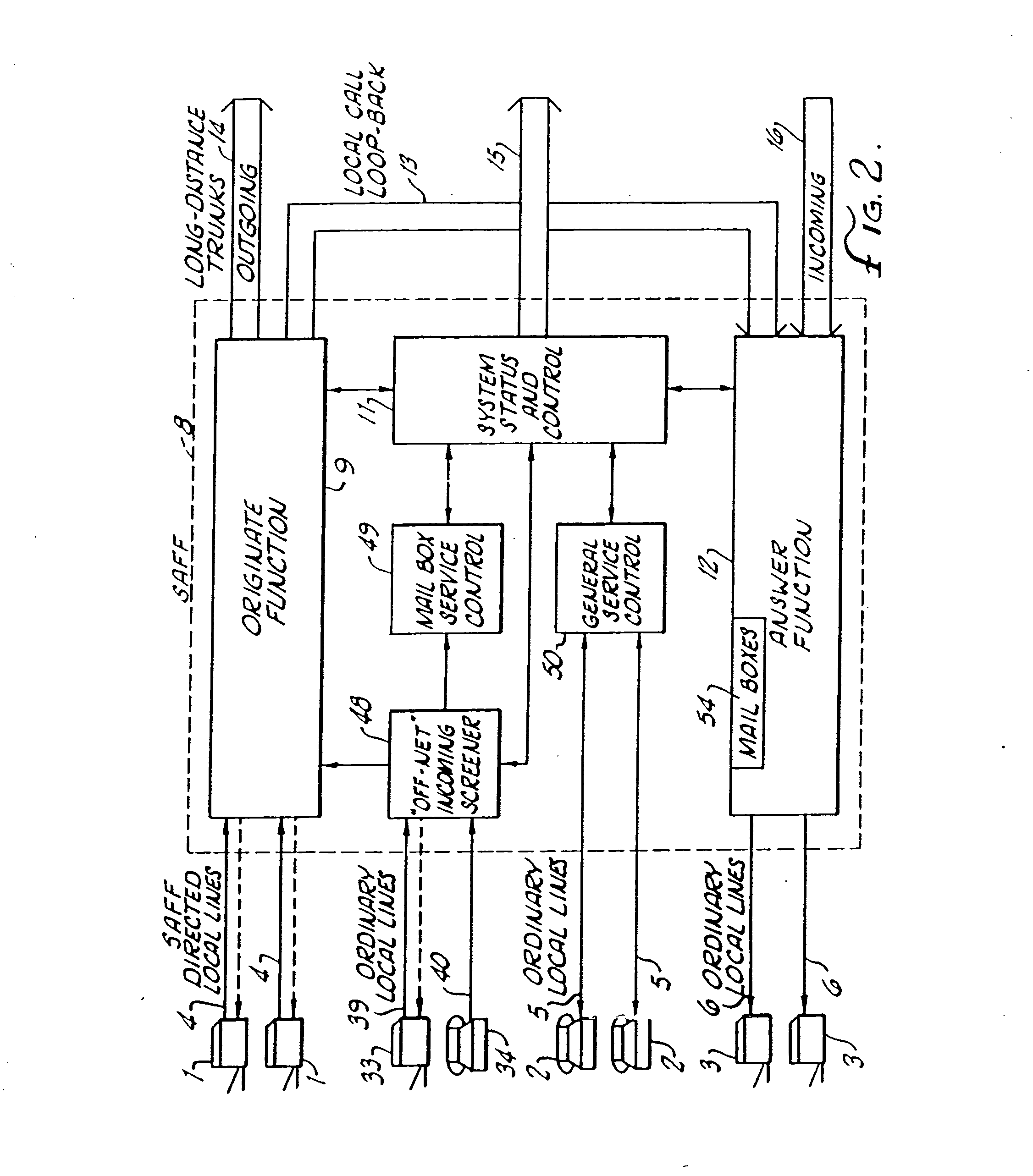Facsimile telecommunications system and method
a fax and telecommunications technology, applied in the field of telecommunications systems, can solve the problems of wasting the time of the originating operator, limiting the number of documents, and a large number of practical problems of the fax user, and achieve the effect of facilitating delivery and reducing the number of delays
- Summary
- Abstract
- Description
- Claims
- Application Information
AI Technical Summary
Benefits of technology
Problems solved by technology
Method used
Image
Examples
Embodiment Construction
Introduction
[0037] The preferred embodiment of this invention is a multi-function, interactive facsimile transmission system which is integrated into a switched telephone distribution network, where “network” is taken broadly to mean the entire system required to complete a communication from an originator to an answerer. This embodiment provides a comprehensive computerized fax message management system based on automated fax Store And Forward Facilities (SAFF) embedded in the network. This system requires no modifications to existing facsimile machines, but rather, relies on the network to provide the enhanced services.
[0038] The system contains several components which actually transmit the fax messages and related information, provide written fax reports to users about the status of messages within the system, allow user intervention in the sequence of automatic actions of the system, provide an accounting of services rendered for both the customer and the telephone company, ...
PUM
 Login to View More
Login to View More Abstract
Description
Claims
Application Information
 Login to View More
Login to View More - R&D
- Intellectual Property
- Life Sciences
- Materials
- Tech Scout
- Unparalleled Data Quality
- Higher Quality Content
- 60% Fewer Hallucinations
Browse by: Latest US Patents, China's latest patents, Technical Efficacy Thesaurus, Application Domain, Technology Topic, Popular Technical Reports.
© 2025 PatSnap. All rights reserved.Legal|Privacy policy|Modern Slavery Act Transparency Statement|Sitemap|About US| Contact US: help@patsnap.com



